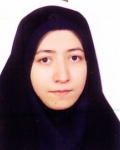| Authors | Jahanishakib Fatemeh,Elham Yousefi roobiat |
|---|---|
| Journal | Environmental Resources Research |
| Page number | 1-22 |
| Serial number | 11 |
| Volume number | 1 |
| Paper Type | Full Paper |
| Published At | 2023 |
| Journal Type | Typographic |
| Journal Country | Iran, Islamic Republic Of |
| Journal Index | isc |
Abstract
Sustainable land-use planning refers to the effort to establish a balance between economic growth, ecological structures, environmental protection, and social progress. Therefore, land-use suitability assessment and inclusion of land use compression are essential in this context. In recent years, the use of artificial intelligence (AI) tools significantly increased for land-use planning. In this study, the Multi-Objective Land Allocation (MOLA) algorithm, Gravitational Search Algorithm (GSA), and Image Processing (IP) technique have been applied to urban land use allocation of the Birjand watershed based on a comprehensive set of sustainable development goals. The objectives used include maximizing fitness functions (e.g., environmental and ecological suitability, compression functions, and landscape stability), minimizing land-use conversion, imposing limitations on flood-prone areas as protected sites with above 70% slope, the demand for urban areas, and consideration of only one land use per pixel. Visual assessment, statistical and landscape metrics analyses were employed to compare results from the selected algorithms. Results showed that MOLA (with an average suitability of around 215) had better allocation concerning land use suitability assessment for urban development. Also, MOLA and IP algorithms (with standard deviations of 41.037 and 41.729, respectively) were better than GSA. Additionally, based on landscape metrics analysis the studied algorithms behaved differently in terms of efficiency and superiority.
